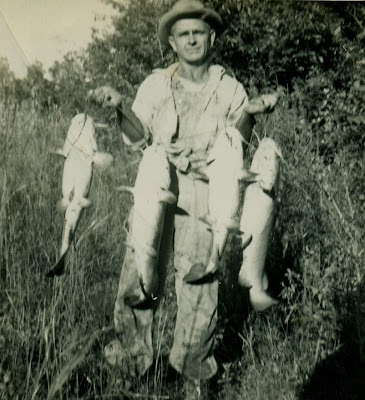
It is hard to imagine just how much our ancestors moved around back in the old days. Without our modern travel conveniences, it would seem that they would want to stay in one place. Roads as we know them were nonexistent. Travel was slow and full of dangers. Yet, our ancestors traveled and moved with much more regularity than we would think. David Beasley is a good example of this.
David Beasley was born in North Carolina. His tombstone in Jefferson County, Alabama indicates his year of birth was 1816, but the 1900 census gives his age as 93 years old which places him as being born in 1807. Safe to say, he was born between 1807 and 1816. In 1850, we find David in Barnwell District, South Carolina, married to Dicey and with three children. By 1860, David was in Coosa County, Alabama where he had joined his father and mother, Henry and Charlotte Beasley, who were living near the Mt. Olive community. David's wife in this census is Eliza A., and there are two new children in the household.
The next decade's census finds David living in Lawrence County, Alabama - clear across the state. David's household has grown tremendously with nine children now living with him. His wife's name is Eliza B, but she appears to be a different Eliza. Family researchers indicate that she is Elizabeth Sewell, previously married to a Phillips. That explains the rapid expansion of the household and the varying ages of the children in 1870.
By 1880, David had moved to Itawamba County. Eleven children now grace his household, several shown to be step-children with the last name of Phillips. The 1890 census is missing, but in 1900 we find David living in Jefferson County, Alabama. He and Elizabeth, who interestingly enough is shown with an occupation of 'midwife,' were living in their daughter's household. David died in December 1900 and was buried in Moncrief Cemetery in Gardendale, Jefferson County. He left several adult children behind in Itawamba County however, and many of his descendants call Itawamba home today, including Ricky Beasley who shared this photo with Don Dulaney.
Census records give us a glimpse of a person's residence only every ten years, and it is highly likely that David lived in other places in between the censuses. But one thing is certain: the evidence shows that David was a highly mobile person during his long and very full life.
1850 Census
Barnwell County, South Carolina
David Beasley 30 SC
Dicey 25 SC
Eliza 7 SC
Josephine 6 SC
John 3 SC
1860 Census
Coosa County, Alabama
Mt. Olive post office
Living near Henry & Charlotte Beasley, both 73 years old and born in North Carolina
David Beazley 46 NC farmer
Eliza A. 42 SC
Josephine 16 SC
John 12 SC
Sarah A. 6 SC
Jefferson 5 SC
1870 Census
Lawrence County, Alabama
Courtland post office
David Beasly 54 NC farmer
Eliza B. 34 AL
Josephine 15 AL
Wm. B. 15 AL
Margaret 10 AL
Martha 8 AL
Amos 6 AL
Alexander 8 mo AL
Sarah 17 AL
Martha J. 9 AL
Nancy 8 AL
1880 Census
Itawamba County, Mississippi
5th Supervisor's District
David Beesly 73 NC NC NC farmer
Bettie 45 AL NC GA housekeeper
Jane 18 NC NC SC daughter
Nancy 15 AL NC SC daughter
Josephine Phillips 23 AL AL AL step-daughter
Margaret Phillips 18 AL AL AL step-daughter
Martha Phillips 16 AL AL AL step-daughter
Amos Beasley 14 AL NC AL son
Viola Beasley 13 AL NC AL daughter
Marshall Buzley 10 AL NC AL son
Era Buzley 6 AL NC AL daughter
Luceller Buzley 5 MS NC AL daughter
Jasper Phillips 1 MS TN AL no relationship given
1900 Census
Jefferson County, Alabama
Precinct 22
David Beasley 93 NC NC NC born May 1807, farmer, “father-in-law”
Elizabeth Beasley 63 AL NC GA born Dec 1836, midwife, “mother-in-law”
In household of:
John B. and Lusell Nickless
Thank you, Ricky, for sharing your family photographs with Don. Ricky is descended from two of the three original Dulaney brothers who moved to Itawamba County in the 1830s: two ways from brother Alfred and another way from brother John. I bet if we kept looking, there would be a connection to the third brother, Gilbert. Ricky Beasley probably has more Dulaney blood that most Dulaneys!


















































